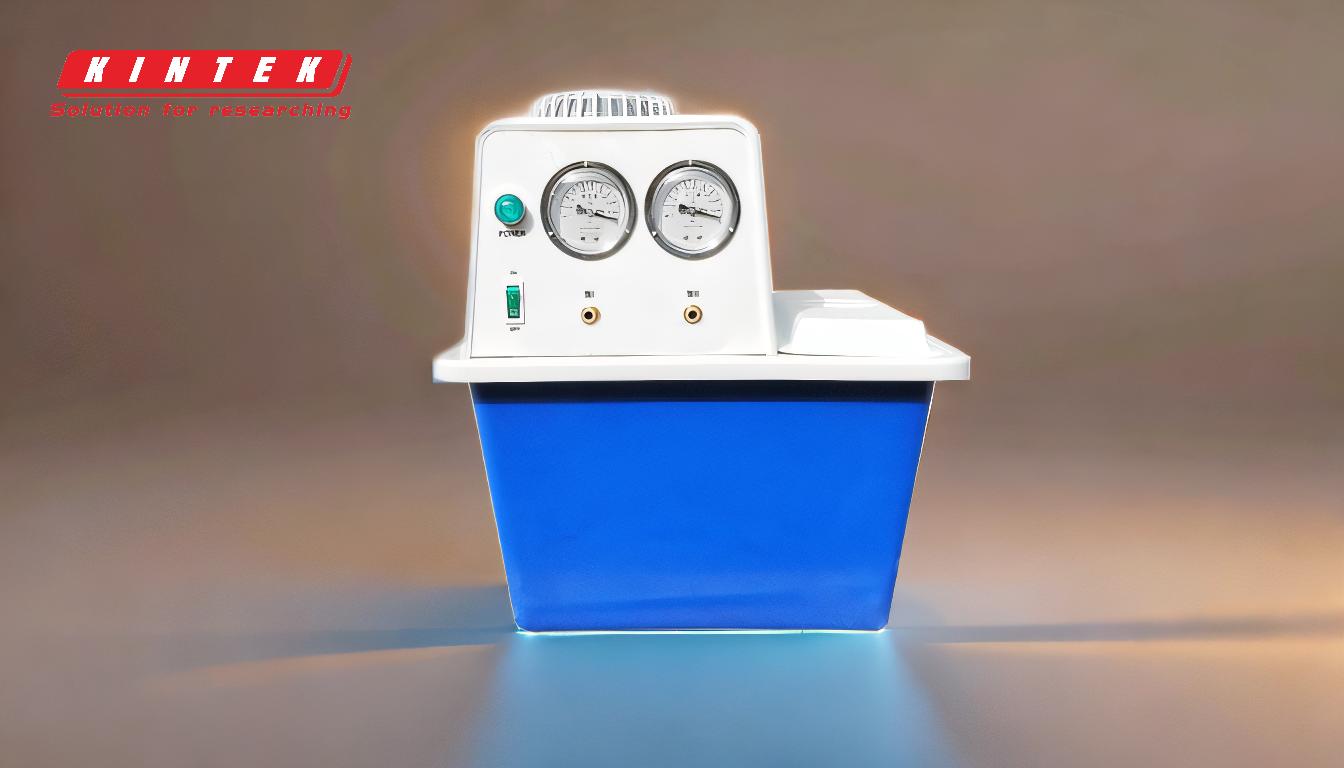When selecting a pump for high vacuum applications, it is essential to understand the specific vacuum range required and the capabilities of different pump types. High vacuum typically refers to pressures between 10^-3 mbar and 10^-7 mbar, which is significantly lower than rough or fine vacuum ranges. For such applications, diffusion pumps, turbomolecular pumps, and cryogenic pumps are commonly used. These pumps are designed to achieve and maintain the extremely low pressures needed for high vacuum environments, making them suitable for applications like electron microscopy, semiconductor manufacturing, and high-energy physics experiments. Compatibility with the process environment, maintenance requirements, and operational efficiency are also critical factors to consider when choosing a high vacuum pump.
Key Points Explained:

-
Understanding High Vacuum Requirements
- High vacuum refers to a pressure range between 10^-3 mbar and 10^-7 mbar.
- Applications requiring high vacuum include electron microscopy, semiconductor fabrication, and particle accelerators.
- Achieving high vacuum necessitates specialized pumps capable of reaching and maintaining such low pressures.
-
Types of Pumps for High Vacuum
-
Diffusion Pumps:
- Use vaporized oil or other fluids to create a high-speed jet that captures and removes gas molecules.
- Capable of reaching pressures as low as 10^-7 mbar.
- Require a backing pump (e.g., rotary vane or diaphragm pump) to operate effectively.
- Suitable for applications where oil contamination is not a concern.
-
Turbomolecular Pumps:
- Use high-speed rotating blades to transfer gas molecules from the inlet to the outlet.
- Achieve pressures in the range of 10^-7 to 10^-10 mbar.
- Oil-free operation, making them ideal for cleanroom environments and sensitive applications.
- Require a backing pump for initial evacuation.
-
Cryogenic Pumps:
- Use extremely low temperatures (cryogenics) to condense and trap gas molecules.
- Capable of reaching pressures below 10^-10 mbar.
- Ideal for ultra-high vacuum applications, such as space simulation chambers.
- Require periodic regeneration to release trapped gases.
-
-
Factors to Consider When Choosing a High Vacuum Pump
- Ultimate Vacuum Level: Ensure the pump can achieve the required pressure range for your application.
- Compatibility: Verify that the pump materials and design are compatible with the process environment (e.g., corrosive gases, solvents).
- Maintenance: Consider the maintenance requirements, such as oil changes for diffusion pumps or regeneration cycles for cryogenic pumps.
- Operational Efficiency: Evaluate the pump's power consumption, pumping speed, and reliability.
- Backing Pump Requirement: Determine if a secondary pump is needed to support the high vacuum pump's operation.
-
Applications of High Vacuum Pumps
- Electron Microscopy: Requires ultra-high vacuum to prevent electron scattering and contamination.
- Semiconductor Manufacturing: High vacuum is essential for processes like sputtering and ion implantation.
- Particle Accelerators: Maintain high vacuum to minimize particle collisions with gas molecules.
- Space Simulation: Cryogenic pumps are used to simulate the vacuum of space for testing spacecraft components.
-
Comparison of High Vacuum Pumps
Pump Type Ultimate Vacuum (mbar) Oil-Free Operation Maintenance Requirements Typical Applications Diffusion Pump 10^-7 No Oil changes required General high vacuum applications Turbomolecular Pump 10^-10 Yes Minimal maintenance Cleanroom, semiconductor fabrication Cryogenic Pump <10^-10 Yes Regeneration required Ultra-high vacuum, space simulation
By carefully evaluating these factors and understanding the capabilities of each pump type, you can select the most suitable high vacuum pump for your specific application.
Summary Table:
| Pump Type | Ultimate Vacuum (mbar) | Oil-Free Operation | Maintenance Requirements | Typical Applications |
|---|---|---|---|---|
| Diffusion Pump | 10^-7 | No | Oil changes required | General high vacuum applications |
| Turbomolecular Pump | 10^-10 | Yes | Minimal maintenance | Cleanroom, semiconductor fabrication |
| Cryogenic Pump | <10^-10 | Yes | Regeneration required | Ultra-high vacuum, space simulation |
Need help selecting the right high vacuum pump? Contact our experts today for personalized advice!








